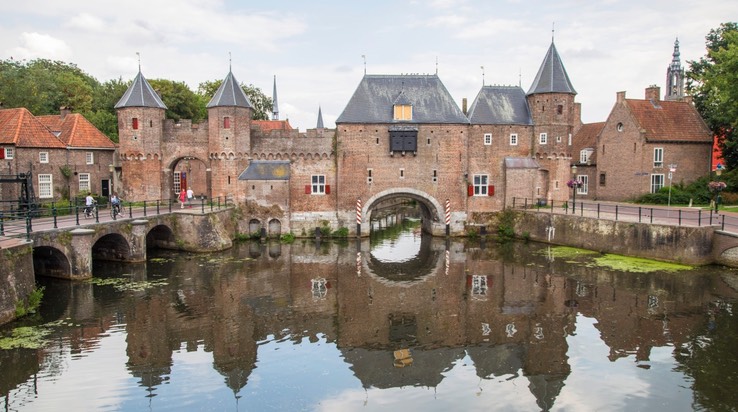 As we made our way east through the lakes between the mainland and Flevoland we stopped at places which I had never heard of and didn’t expect to be anything special. Yet Spakenburg turned out to have such a beautiful old fishing harbour and Elburg and Amersfoort were picture perfect medieval cities!
As we made our way east through the lakes between the mainland and Flevoland we stopped at places which I had never heard of and didn’t expect to be anything special. Yet Spakenburg turned out to have such a beautiful old fishing harbour and Elburg and Amersfoort were picture perfect medieval cities!
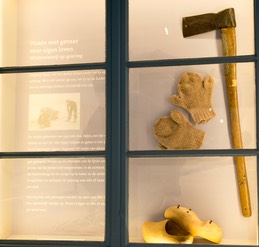
When in 1932 the big dyke was completed, which the Dutch call aptly the “Locked-in Dyke” (Afsluitdijk), part of the North Sea, the “Zuiderzee”, was closed in. This left behind freshwater lakes and reclaimed land now called Flevoland. 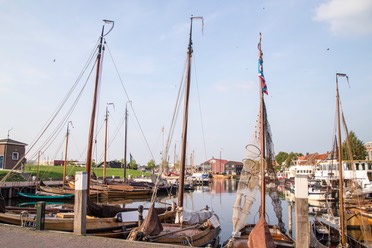 Coastal townships like Spakenburg and Elburg were devastated as there main source of income had been fishing. Even in winter when part of the sea was frozen fishermen went out with special sleighs and made holes into the ice with an axe to be able to fish. It was a dangerous job.
Coastal townships like Spakenburg and Elburg were devastated as there main source of income had been fishing. Even in winter when part of the sea was frozen fishermen went out with special sleighs and made holes into the ice with an axe to be able to fish. It was a dangerous job.
They had nails under their wooden clogs acting as spikes and were wearing matted wool mittens with a thumb on either side, just in case one side tore. Men and women in those times were working in smokehouses threading tonnes of herrings or eels onto long wooden stakes ready for smoking.
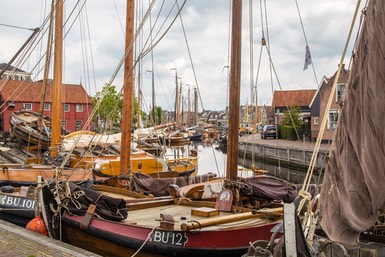
Turning from the quite modern yacht harbour into the old village of Spakenburg I expected den “Fliegenden Holländer” (The Flying Dutchman) to appear before us. The old museums harbour is full of wooden “botters", fishing ships from the beginning of last century. They are lovingly maintained and some of the sailboats take people out for a sailing experience.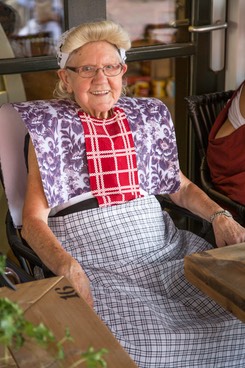
A lovely town museum shows films of the activities in the smokehouses, the button making and textile industry and an amazing film of the building of the “Afsluit- dyke". There are also displays of local costumes and general life of past times. A few older ladies still wear the traditional garments around town.
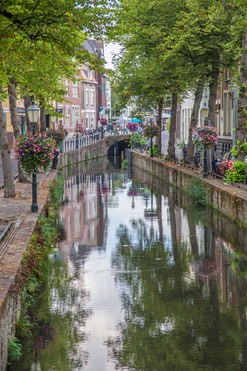
Twenty kilometres inland is the fortress town of Amersfoort. Here curved canals crossed by small bridges, medieval lanes and houses add to the well maintained historic centre. The names of streets and places tell of their past use, like “apple market”, “animal market”, “mill street" and "cow street”. The town is surrounded by water and parts of the town wall, gates and towers are amazingly well preserved, as seen on top of this page.
In contrast the usual features of defence seem to be missing in Spakenburg.
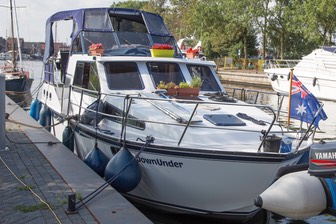 No wonder then, that the harbour was invaded by 4 Aussie boats at once! We all got together on the “Dijon” Dianne's and John’s boat, then on the "Down Under” Anne’s and Gordon’s boat for drinks. While Sue and Greg from Tassie and the crew from the Dijon had to leave the next day, Anne and Gordon stayed on and invited us for a BBQ . We had a wonderful evening with good talks and Gordon’s delicious barbecued chicken and roast potatoes.
No wonder then, that the harbour was invaded by 4 Aussie boats at once! We all got together on the “Dijon” Dianne's and John’s boat, then on the "Down Under” Anne’s and Gordon’s boat for drinks. While Sue and Greg from Tassie and the crew from the Dijon had to leave the next day, Anne and Gordon stayed on and invited us for a BBQ . We had a wonderful evening with good talks and Gordon’s delicious barbecued chicken and roast potatoes.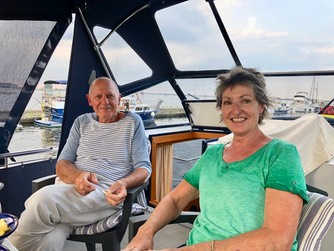
The next morning the Down Under headed towards Muiden and we continued on to the North. Our next stop was Elburg where the huge size of the yacht harbour surprised us. Even though the mooring fees were steep at 19 euros for our size boat, water, electricity and hot showers were free and to Austin’s delight there was great internet connection. 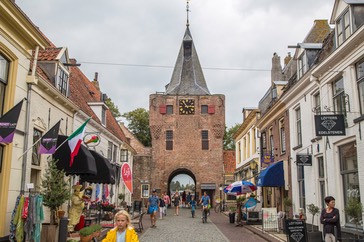
Coming from the modern yacht harbour one enters via the "Fishing Gate" into another world. The tower above was once a defence tower with it’s big lantern serving as a homing device for fishermen and seafarers. The casemates on either side are the oldest canon basements in the Netherlands. 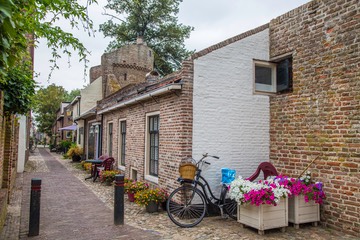 There are other parts of the town wall remaining with the typical “wall houses”, small houses built right against the town wall. Elburg was built in the 14th century within 4 years and strictly from plan in a rectangular shape and surrounded by water.
There are other parts of the town wall remaining with the typical “wall houses”, small houses built right against the town wall. Elburg was built in the 14th century within 4 years and strictly from plan in a rectangular shape and surrounded by water.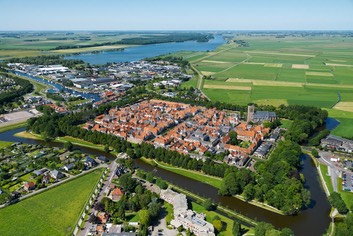 Strangely enough, Elburg was given city rights while, as we were told, Den Haag never had. The process of awarding city rights was abandoned once The Netherlands became a republic. City rights meant that a place could impose their own laws and punishments. The museum displays some of these, like the pillory, a bench where the legs of the accused people were locked in and they had to sit there being shamed by passers-by until a judge would finally arrive. One man carved into the shame-bench that he was sitting there for 8 days.
Strangely enough, Elburg was given city rights while, as we were told, Den Haag never had. The process of awarding city rights was abandoned once The Netherlands became a republic. City rights meant that a place could impose their own laws and punishments. The museum displays some of these, like the pillory, a bench where the legs of the accused people were locked in and they had to sit there being shamed by passers-by until a judge would finally arrive. One man carved into the shame-bench that he was sitting there for 8 days.
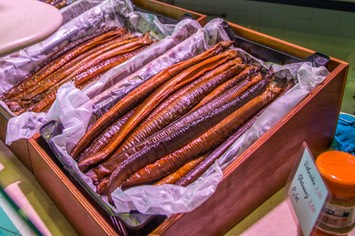
We also visited the jewish museum located within the former synagogue. It tells the stories of 12 jewish families living in Elburg for more than 200 years.
Around the old harbour and fish market are some very nice fish restaurants.
But we were keen to visit the local smokehouse. Unfortunately it was closed. However the adjoining shop sold what we were after: smoked eel, a northern European delicacy! It’s quite delicious, but very fatty. For those who haven’t eaten eel before, I recommend to have it with some bread or on toast accompanied by a little horseradish. Yum!